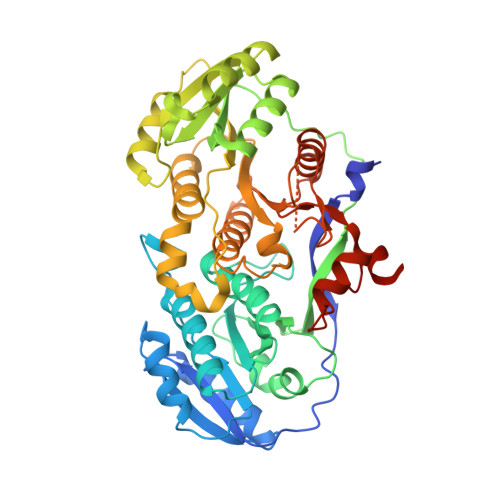The Structure of a Ketoreductase Determines the Organization of the beta-Carbon Processing Enzymes of Modular Polyketide Synthases
Keatinge-Clay, A.T., Stroud, R.M.(2006) Structure 14: 737-748
- PubMed: 16564177
- DOI: https://doi.org/10.1016/j.str.2006.01.009
- Primary Citation of Related Structures:
2FR0, 2FR1 - PubMed Abstract:
The structure of the ketoreductase (KR) from the first module of the erythromycin synthase with NADPH bound was solved to 1.79 A resolution. The 51 kDa domain has two subdomains, each similar to a short-chain dehydrogenase/reductase (SDR) monomer. One subdomain has a truncated Rossmann fold and serves a purely structural role stabilizing the other subdomain, which catalyzes the reduction of the beta-carbonyl of a polyketide and possibly the epimerization of an alpha-substituent. The structure enabled us to define the domain boundaries of KR, the dehydratase (DH), and the enoylreductase (ER). It also constrains the three-dimensional organization of these domains within a module, revealing that KR does not make dimeric contacts across the 2-fold axis of the module. The quaternary structure elucidates how substrates are shuttled between the active sites of polyketide synthases (PKSs), as well as related fatty acid synthases (FASs), and suggests how domains can be swapped to make hybrid synthases that produce novel polyketides.
Organizational Affiliation:
Department of Biochemistry and Biophysics, University of California, San Francisco, 600 16(th) Street, San Francisco, California 94107, USA. adriankc@msg.ucsf.edu















